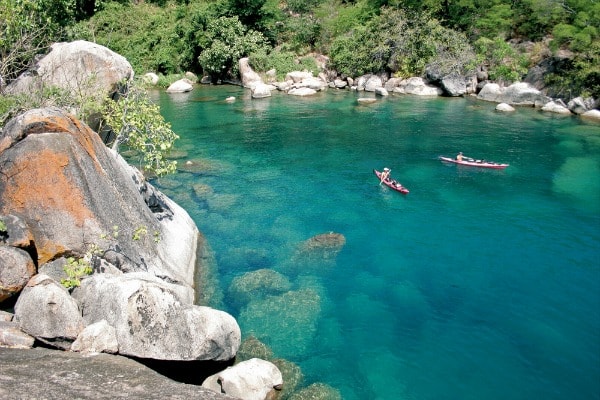Africa is home to some of the largest, deepest, and all-round awe-inspiring lakes in the world. Most of the major lakes on the continent are part of what is known as Africa’s “Great Lakes”. These are a series of lakes that lie along the East African Rift Valley and connect with both the Nile and Congo rivers.
Here, in order of depth, are some of the Africa’s deepest lakes that boast enormous amounts of unique aquatic species, and offer unrivaled holiday experiences.
Lake Tanganyika

Lake Tanganyika is not only the longest lake in the world (673 kilometres), but it’s also the second-deepest (1,470 metres) after Russia’s Lake Baikal. It’s also one of the oldest, dating back to 13 million years. The lake straddles the borders of Tanzania, Burundi, Congo DR, and Zambia.
Considered one of the most biologically unique habitats in the world, Tanganyika is home to an exceptional diversity of fish, supporting more than 250 species of cichlids – 98% of which aren’t found anywhere else in the world. There are also about 75 non-cichlid fish species in the lake. The fish from Tanganyika is exported throughout East Africa and beyond. The lake’s warm blue waters make it an excellent destination for diving and snorkeling. Bird watching is also superb at Tanganyika.
Lake Malawi, also known as Lake Nyasa or Niassa

Located between Malawi, Mozambique, and Tanzania, Lake Malawi is the southernmost lake in the East African Rift system and is the third-largest in Africa. A part of the Malawian section of the lake was turned into a national park, while the Mozambican portion was declared a reserve in 2011.
Lake Malawi is home to 800 to 1,000 species of fish – the largest fish population of any lake in the world. There are numerous fishing villages around this vast body of water, where many people benefit economically from the lake.
Every year, the lake attracts hordes of local and international tourists who visit the charming palm-fringed beaches on the shores of the lake.
Lake Kivu

Lake Kivu lies in Central Africa on the border of the Democratic Republic of Congo and Rwanda, covering a surface area of over 2700 square kilometres. This fresh lake is believed to be one to five million years old, and has a depth of 485 metres. What’s fascinating is that the great lake contains high amounts of methane and carbon dioxide in the depth of its waters.
It’s also home to 31 species of fish, including Nile Tilapias, Lake Rukwa Minnows and various types of catfish. Fish that serve as a popular source of food for locals is the Tanganyika sardine. The lake empties into the Ruzizi River, which flows southwards into Lake Tanganyika.
